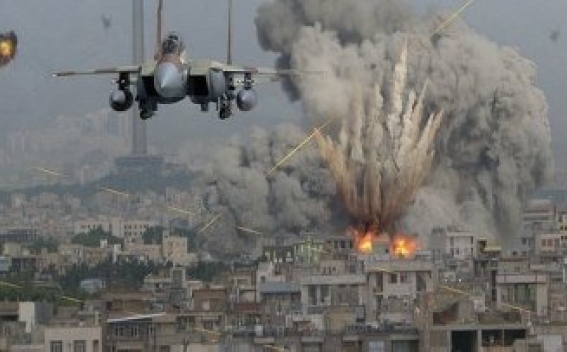(AhlulBayt News Agency) - In March 2015 a Saudi-led coalition began bombing Houthi fighters who had forced Yemen’s president into exile. Analysis of a comprehensive, open source data survey of the campaign shows airstrikes have regularly hit civilian, economic and cultural sites. The air campaign has recently intensified after the collapse of a patchy ceasefire
Why is Saudi Arabia bombing Yemen?
In 2014, Houthi fighters captured Yemen’s capital, Sana’a. The president, Abd Rabbuh Mansur Hadi, was left powerless and escaped to Aden after the Houthis attacked his private residence and dissolved parliament. In March 2015, when a renewed fighters offensive forced Hadi to flee to Saudi Arabia, a Saudi-led coalition began bombing what it said were military targets associated with the Houthis and forces loyal to Hadi's predecessor, Ali Abdullah Saleh. Saudi Arabia regards the Houthis as Iranian proxies and intervened to check their advance, supporting pro-Hadi forces aiming to retake Sana’a.
Where have the air raids targeted?
The Houthis were pushed out of Aden in July 2015 and have lost ground near Marib but their territory has generally not changed during 18 months of bombing
Who is involved?
Intense periods of bombing during the campaign tend to coincide with specific military and political setbacks for the coalition. The Yemen Data Project database shows that these escalations then increase the number of incidents involving non-military sites. A missile strike on UAE troops serving with the coalition in Marib in September 2015 was the cue for a major change in tempo, which saw the first bombing of Sana’a’s historic old city. Several months followed where air raids involving non-military sites outnumbered those involving military targets
What have the air raids targeted?
Intense periods of bombing during the campaign tend to coincide with specific military and political setbacks for the coalition. The Yemen Data Project database shows that these escalations then increase the number of incidents involving non-military sites. A missile strike on UAE troops serving with the coalition in Marib in September 2015 was the cue for a major change in tempo, which saw the first bombing of Sana’a’s historic old city. Several months followed where air raids involving non-military sites outnumbered those involving military targets
The database lists over 8,600 separate incidents that, according to its methodology, may each involve multiple strikes and aircraft. Each attack’s primary target is classified as either military, unknown or one of several non-military categories based on the original or general purpose of a building or place. Incidents involve sites such as school buildings, hospitals, mosques and marketplaces. A single marketplace in the flashpoint district of Sirwah in Marib governorate has been hit 24 times. The coalition maintains its attacks are targeted only at pro-Houthi forces whom they say use civilian infrastructure for military purposes.

Where have civilians borne the brunt?
In Saada, the coalition declared the whole governorate a military target but data shows air raids hit mostly non-military sites
Yemen’s most heavily-bombed region is Saada governorate, the heartland of Zaydi Islam to which the Houthis adhere. In May 2015, the coalition dropped leaflets declaring all of Saada a military target and advising residents to leave. Incidents involving non-military sites in Saada outnumber hits on military targets three to one in the database.

There were five strikes on the al-Anad market in Sihar and 10 strikes on mosques, all of them believed to be Zaydi. In August, 10 children were killed in an attack that hit a school in the Haydan district.
In Taiz, civilians have suffered for the governorate's strategic importance
Large numbers of civilians have died in several high-profile incidents in Taiz, which the Yemen Data Project lists as the governorate with the second highest percentage of attacks involving non-military sites. It straddles the former north-south frontier from Yemen's days as a partitioned state, which the frontlines of the current conflict resemble. The Houthis have support in the governorate but it is not universal. Taiz city has been under Houthi siege.

In September 2015, 135 people died in Taiz governorate when a wedding party was bombed in the village of Wahija, near al-Mukha, and more than 30 died in June this year when airstrikes hit a market in Hayfan during the supposed ceasefire. Taiz has also seen the largest number of school buildings struck in a single governorate with one site in al-Omary, Dhubab being hit nine times. This is consistent with the Saudi strategy of repeat targeting — Taiz airport and the docks in al-Mukha have been hit 16 and 18 times respectively.

/129

